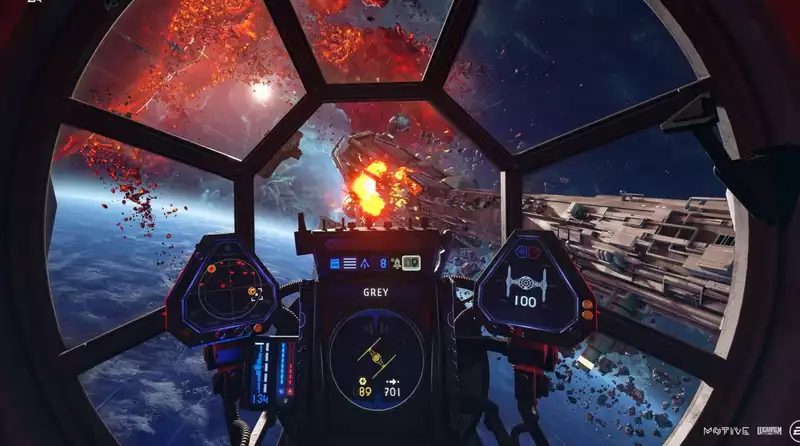When Star Wars: Squadrons launches in October, hot-blooded space jockeys will have eight Starfighters: four Imperial and four Rebel, each in a different class. That's not news in itself, but today EA released more information about what each class can do, how pilots can get the most out of their machines, and how to recreate futuristic technology from long ago.
The old X-Wing and TIE Fighter games had a power management system that allowed players to adjust the amount of energy sent to weapons, engines, and in some cases shields, which in turn affected the performance of the fighter: depending on the situation, it could fly faster, stronger attack or survive longer under fire. Squadrons offer a similar system, with the addition of an "overcharge" bonus, which gives a significant bonus to damage output and shield strength, up to a factor of two, or an afterburner-like speed boost when the relevant system is maxed out.
Shieldless fighters (all TIEs except the Reaper fall into this category) will instead be able to shift energy and weapon power much more quickly than other ships, allowing them to overcharge almost instantly without having to wait to be recharged.
Once the shields are destroyed (or if there were no shields), the hull begins to take a beating and the ship begins to take visible damage, eventually being destroyed. However, repairs can be made by using astromech droids or other repair systems, docking with the flagship, or with the help of support class fighters.
This is the aircraft you will be flying:
The fighter is a basic anything-goes machine, tough there, fast there, agile there. Interceptors are glass cannons: they move fast, hit hard, and blow up easily. Bombers are slow sluggers, capable of inflicting and sustaining tremendous levels of damage. And finally, support fighters, although armed with offensive weapons, are not actually fighters and can repair and resupply friendly ships, intercept enemies with tractor beams, and deploy mines and laser turrets.
EA stated a few weeks ago that Squadrons will have a customizable HUD and control scheme, but the developers have also taken pains to ensure that each ship's cockpit remains true to the original Star Wars aesthetic.
"So, if we want to convey the laser charge level on the X-wing, we design the cockpit instrumentation as if Industrial Light & Magic (ILM) made the prop in the 70s," creative director Ian Frazier said.
"We didn't say, 'Put a red light on there,' but we said, 'If we had to physically build this with the kinds of components that ILM had, how would we build it? Are those lights bulbs? How would it be integrated into the dashboard and how would its light interact with the surrounding objects? Ensure that the screen is a CRT with a properly curved monitor, and so on."
This approach is similar to what Creative Assembly did with "Alien: Isolation": it is easy to forget that Star Wars is nearly 50 years old. (It's easy to forget that Star Wars is nearly 50 years old (although I'm still not sure about the "plastic Ewoks on the dashboard" thing.)


Comments